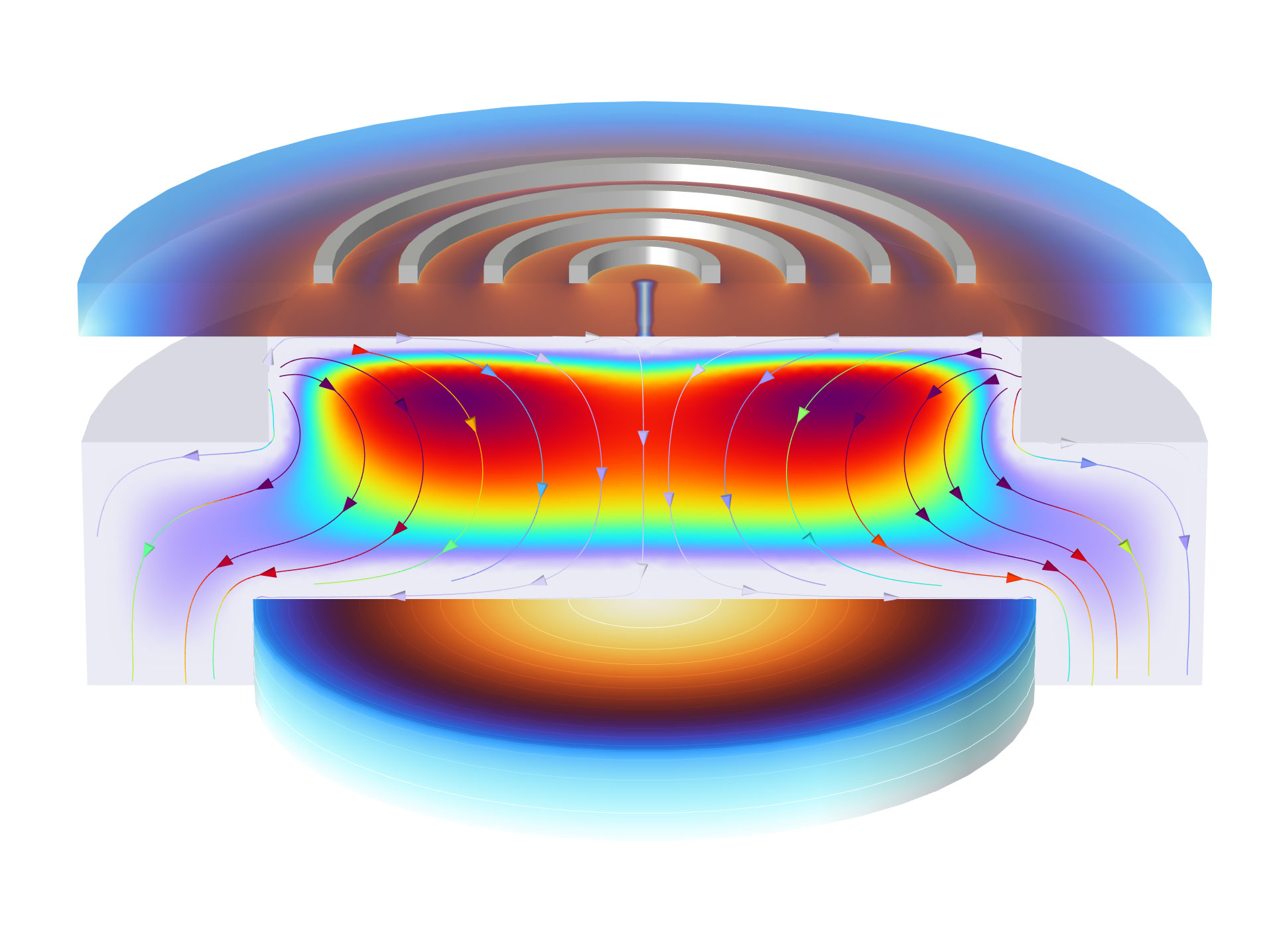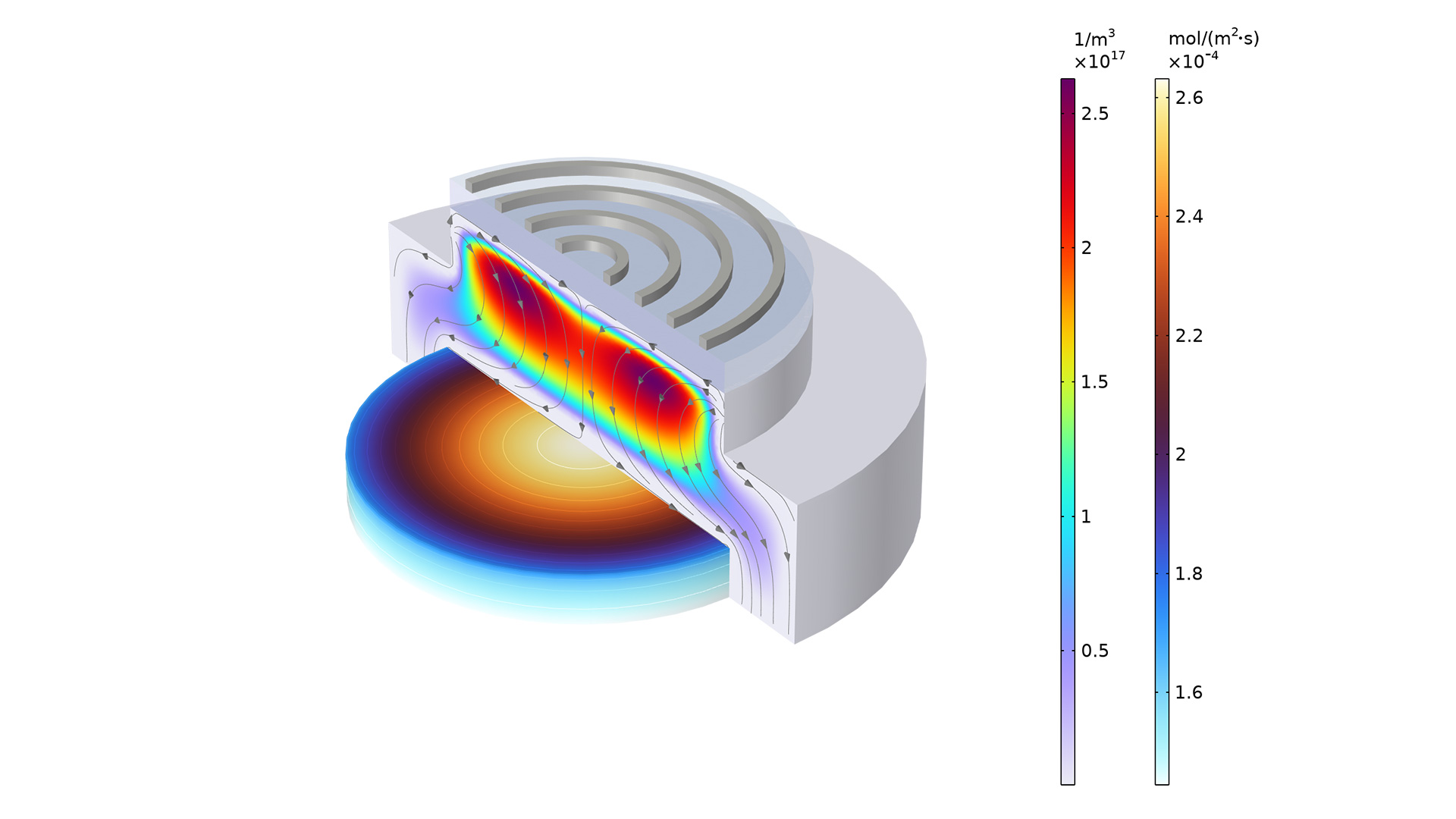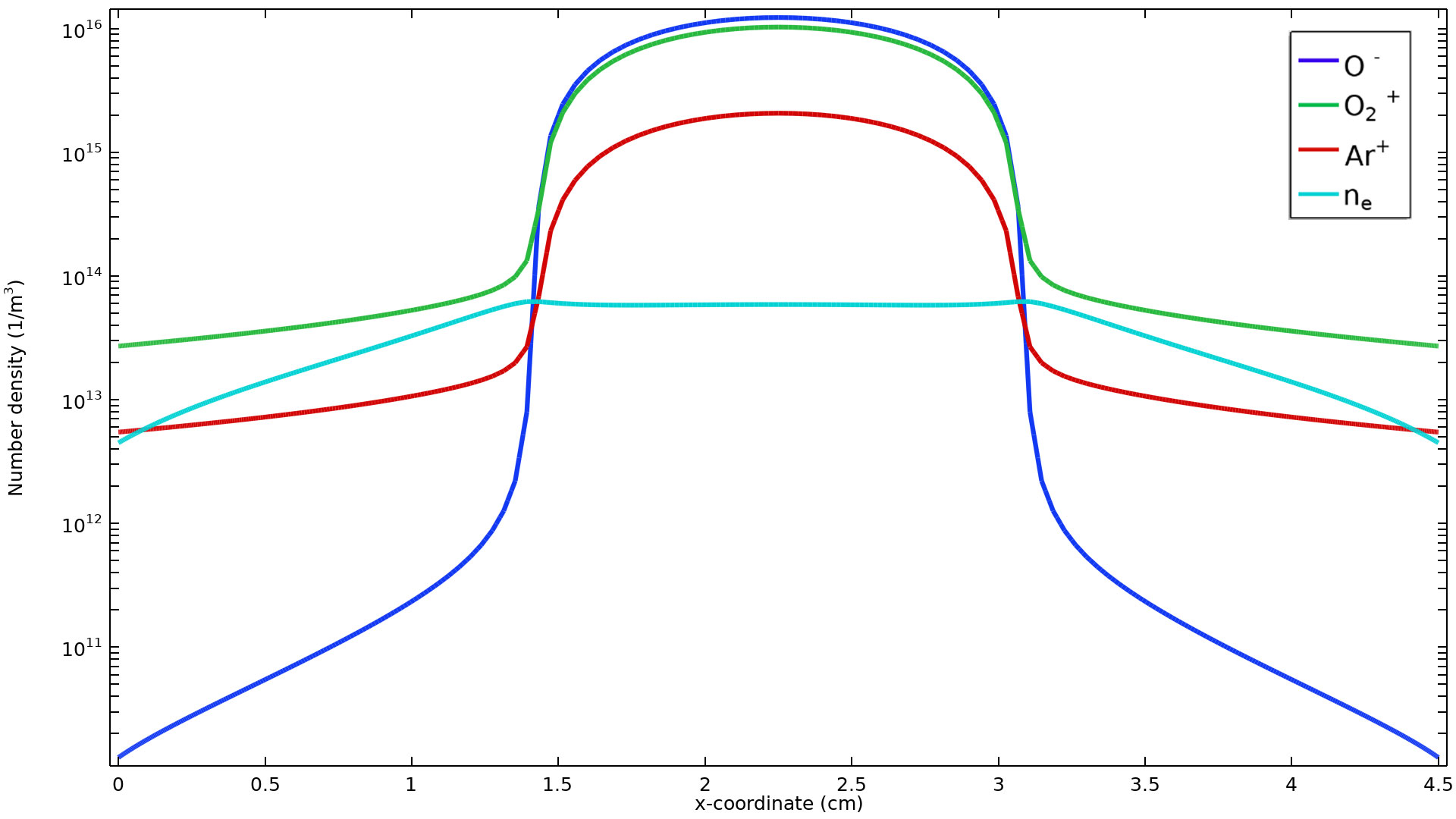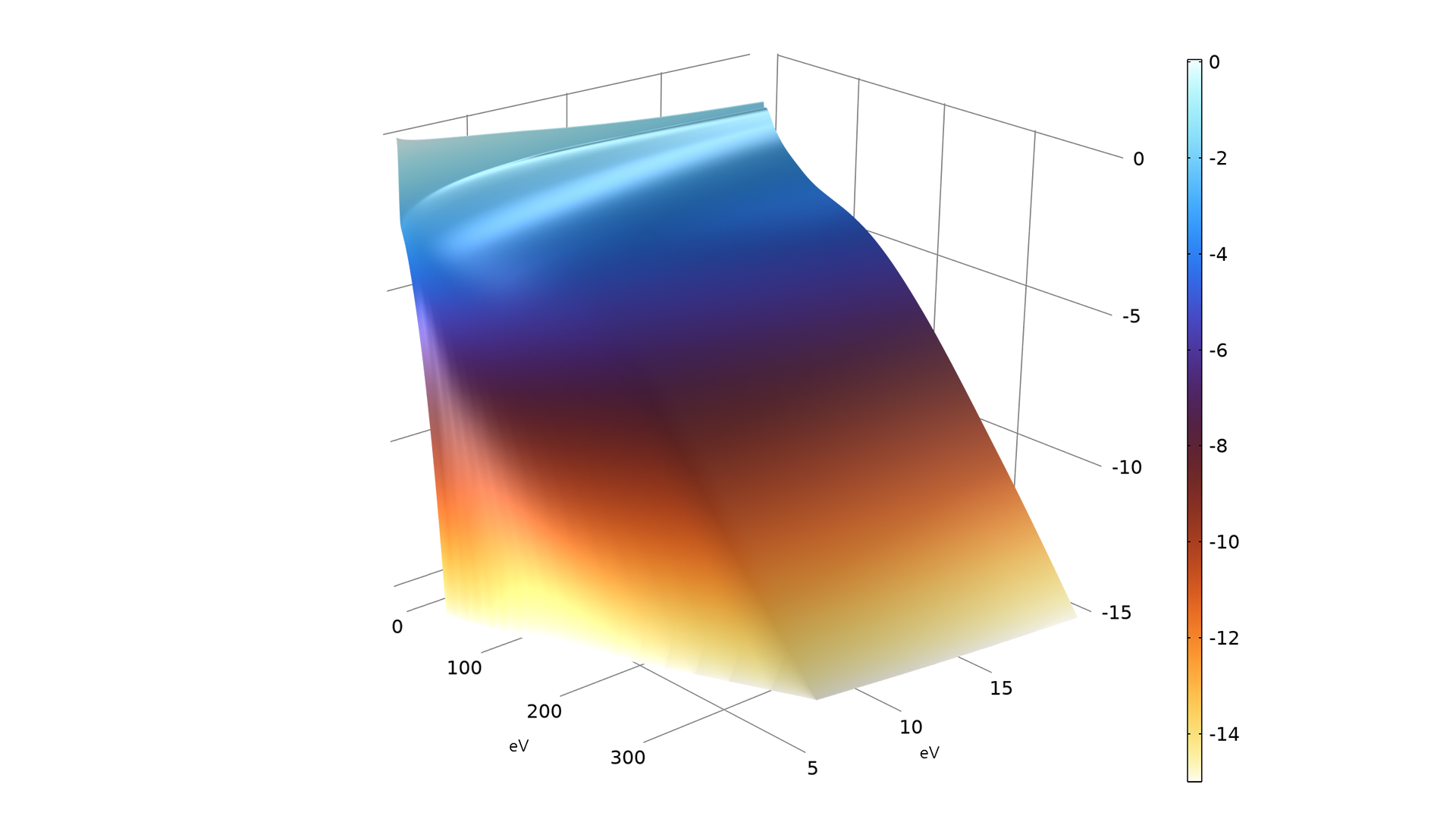support@comsol.com
Plasma Module Updates
For users of the Plasma Module, COMSOL Multiphysics® version 6.1 provides the ability to model coupled plasma reactors with a periodic RF bias, a new Plasma Chemistry add-in that creates a complete plasma chemistry from a text file for models, and four new tutorial models. Read more about these updates below.
Inductively Coupled Plasma with RF Bias Multiphysics Interface
The new Inductively Coupled Plasma with RF Bias multiphysics interface couples the Plasma, Time Periodic and Magnetic Fields interfaces to model inductively coupled plasma (ICP) reactors with a capacitive radiofrequency periodic excitation. The magnetic field is solved in the frequency domain, and the plasma transport equations are solved for a periodic steady state. This interface is dedicated to the modeling of plasma reactors with inductive and capacitive power coupling mechanisms and can be viewed in the new Model of an Argon and Chlorine Inductively Coupled Plasma Reactor with RF Bias model.

Plasma Chemistry Add-In
The Plasma Chemistry add-in automatically creates a complete plasma chemistry from a text file for models using the Plasma and Plasma, Time Periodic interfaces. With the add-in, you can specify the aspects of a plasma chemistry in the file, such as species properties like thermodynamic parameters, electron impact reactions from cross sections and rate constants, heavy species reactions, and surface reactions. The following new models use this feature:
- Model of an Argon and Chlorine Inductively Coupled Plasma Reactor with RF Bias
- Model of an Argon and Oxygen Inductively Coupled Plasma Reactor
- Model of an Argon and Oxygen Capacitively Coupled Plasma Reactor

New Tutorial Models
COMSOL Multiphysics® version 6.1 brings four new tutorial models to the Plasma Module.
Model of an Argon and Chlorine Inductively Coupled Plasma Reactor with RF Bias

Application Library Title:
icp_ccp_argon_chlorine
Download from the Application Gallery
Model of an Argon and Oxygen Inductively Coupled Plasma Reactor

Application Library Title:
icp_argon_oxygen
Download from the Application Gallery
Model of an Argon and Oxygen Capacitively Coupled Plasma Reactor

Application Library Title:
ccp_argon_oxygen
Download from the Application Gallery
Dry Air Boltzmann Analysis

Application Library Title:
boltzmann_dry_air
Download from the Application Gallery
